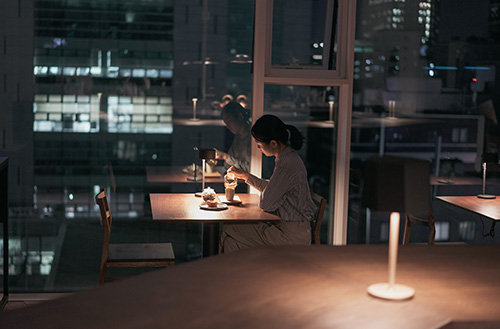

A Sensibility Embracing Generations

Amorepacific Museum of Art
Written by
Jeong Seong-gap

The terms most seamlessly intertwined with Korea's economic and cultural landscape speak of rapid economic development and expeditious growth. Words, such as root and heritage, seemingly fit like an ill-suited garment with Korea. However, this perception is gradually shifting. One is compelled to boldly shed such longstanding preconceptions, especially when witnessing the enduring affection for something passed down through generations.
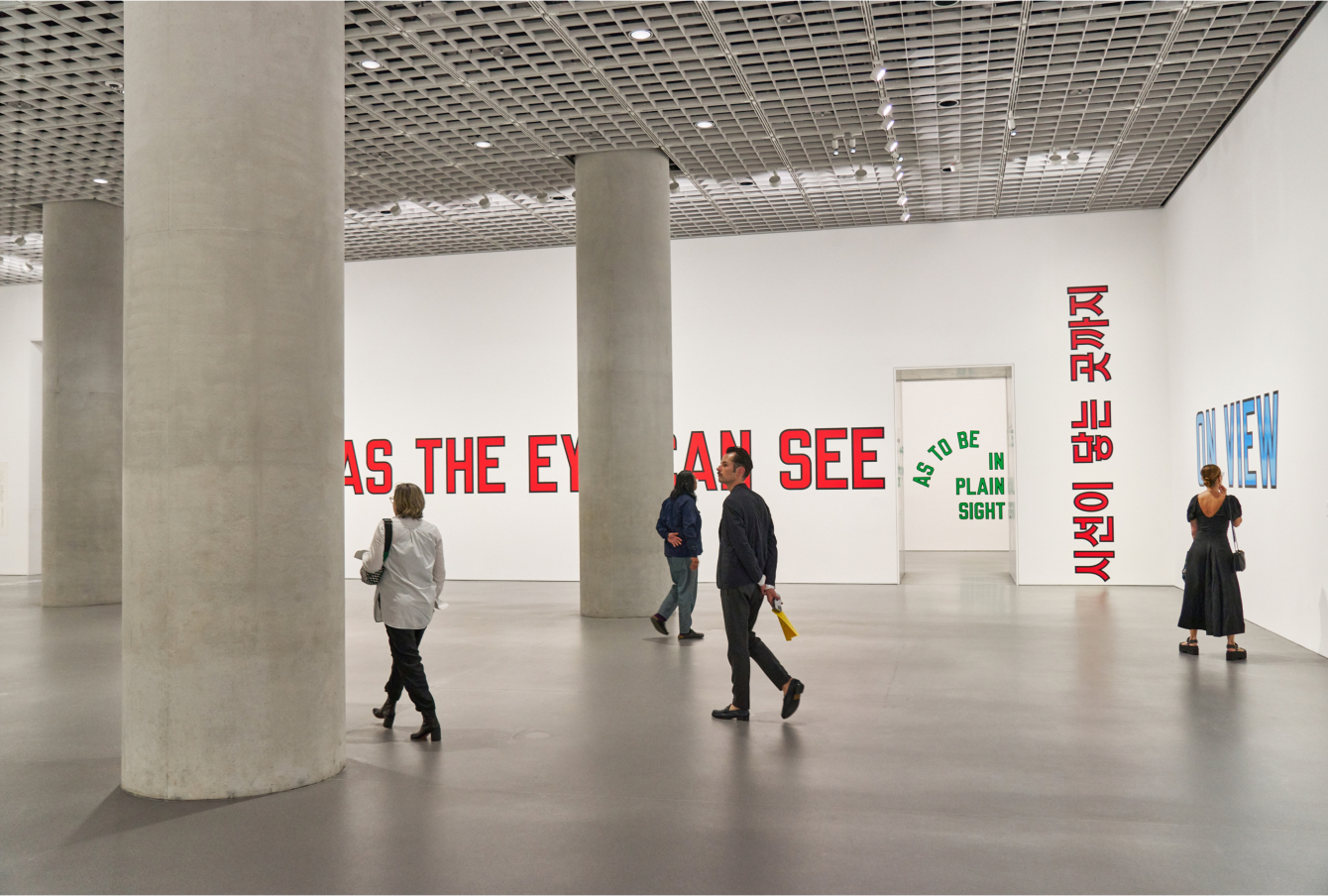
Unpredictable Treasure Trove
Since Frieze threw its hat in the ring in Korea last year, October has naturally transformed into a month of art. Global brands, collectors, gallerists, and art dealers flock to the country, converting Korea's galleries and cultural spaces into art bases. Art base camps are established throughout Seoul, and industry insiders collectively elevate the KIAF & Frieze Week. While hearing that BTS autographs are the most favored gifts among European and Middle Eastern royalty (their wives and children desire them) and that luxury brand representatives actively seek ways to visit Korea, an internal doubt persists: what should be recommended when foreigners come to Seoul? Encountering places excellent both architecturally and in the software that fills them does momentarily elevate the spirit.

Among the places visited during this year's KIAF Frieze Week, the one leaving the most profound impression was the Amorepacific Museum of Art. For a day during the art festival, a corner of the Amorepacific Museum was entirely transformed into a dining space. The colorful letters of Lawrence Weiner's work became art themselves, filling the walls like modern reliefs, and a dining space was arranged. The tables and flowers were harmonized in ‘white dining.’ The dress code was also white. The pièce de résistance was the ceramic collection of the Amorepacific Museum displayed in the center space. Seven pieces of blue and white porcelain and white porcelain from the 16th to 19th centuries, collected by the former chairman, captivated the eyes. A porcelain jar with an iron-brown painting of a dragon among clouds and a blue and white porcelain vase with a well-balanced body showcasing delicate and abundant paintings were notably attention-grabbing. Also present was an 18th-century moon jar, known to have inspired David Chipperfield, who designed the Amorepacific Museum of Art. In museums like the Louvre, patrons are invited to open their treasure troves, and a ‘restaurant’ is arranged in the middle of the exhibition hall to facilitate enjoying art while dining. Writing a related article, I thought it was a truly marvelous event, and indeed, that day's meal was just so.

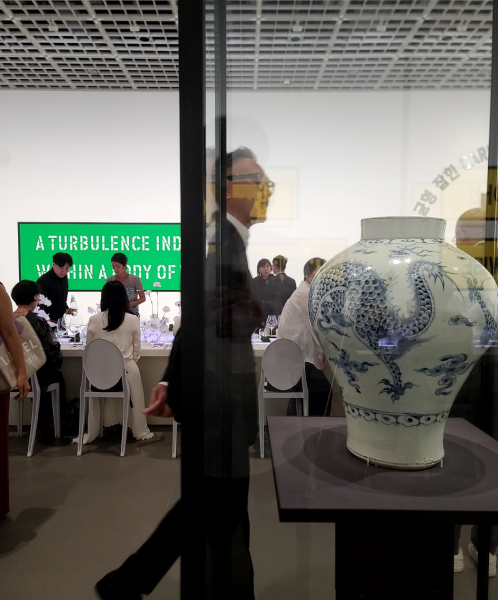
Jeong Seong-gap
An Esteemed Heart that Cherishes
Attaining heritage is a formidable endeavor because such a legacy must not be confined to a single epoch. An individual's passion and collecting desires spanning an era are insufficient to make the heritage of an enterprise and society. It requires a sincere fondness for something, which is transmitted through generations. The term “heritage” bears the air of a medal, embodying the societal understanding and judgment that it is a challenging achievement to realize.
I habitually make a point to attend exhibitions held by Amorepacific. The charm of the arrangement also plays a part. Every content loses its vitality the moment it falls into a predictable flow. Yet, the Amorepacific Museum of Art's spectrum remarkably extends from prehistoric-era relics to contemporary art. It embraces many artistic realms through a multilayered sensibility, from sculptures and photographs that seem sophisticated even a century from now to those that journey back to the distant past.
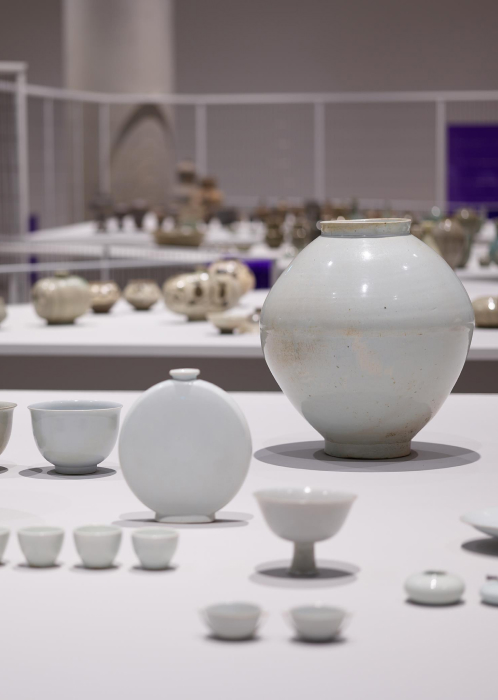

2020 Special Exhibition of Antique Art Collections
While Suh Sung-whan, the founder and former chairman of Amorepacific, primarily collected traditional art, Chairman Suh Kyung-bae collected contemporary art. The 2020 special exhibition of conventional art collections showcased at the Amorepacific Museum of Art remains a memorable masterpiece of an exhibition. The show presented over 1,500 pieces of traditional art encompassing ceramics, paintings, metalwork, and woodworking, including four treasures featuring the Painting of Avalokitesvara Bodhisattva. What was particularly moving was the exhibition design. The many works were categorized according to the year of creation, size, and shape and meticulously placed atop specially crafted large pedestals, akin to installation art. Jewelry items such as hairpins, combs, gold earrings, and jade rings were placed in separately fabricated glass boxes. The ambiance in each exhibition space changed dramatically, with each section rendering continuous surprises through its overwhelming scale and detailed arrangement. It is not easy to showcase traditional artifacts, which are difficult to maintain, in such a polished manner. Still, each piece displayed signs of having received esteemed treatment over a long period. The exhibition, themed around the feast of traditional art, strategically pivots its direction toward contemporary art. In modern art exhibitions, the special exhibition of contemporary art collections held this year remains a vivid memory. Centered around works created post-2000, this exhibition offered a glimpse into Chairman Suh Kyung-bae's foresight and taste. The 37 pieces introduced in seven exhibition rooms included the distinctive paintings of Robert Janitz, who works with oil, wax, and flour on linen, and the large-scale photographs of Andreas Gursky. Observing such grand works in such an open and refreshing space makes one wonder how many such spaces exist in Seoul. The ceiling height of the Amorepacific Museum of Art is 5.7 m, with the exhibition area reaching over 1,000 pyeong.

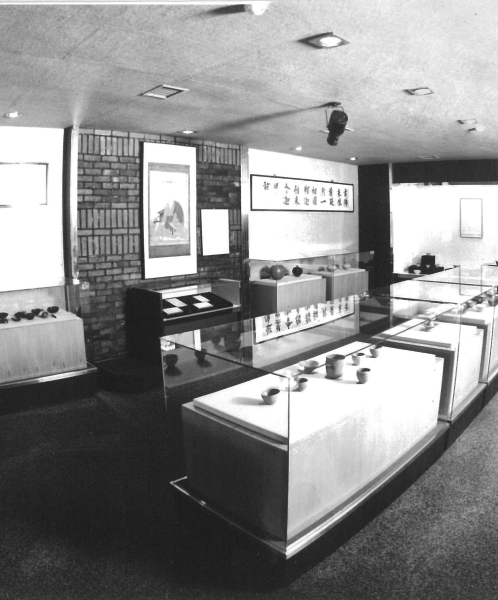
Fruit Born of a Pure Heart
At the heart of heritage lies a genuine love for something real. Perusing the book detailing the story of Amorepacific’s founder, “Even if I Were Reborn, I Would Choose Cosmetics,” one discerns his pursuit of a grander beauty, propelled by interactions with figures such as Chairman Lee Byung-chul of Samsung and Chairman Kim Shin-kwon of Handok Pharmaceuticals. The horizon of beauty expands from a woman's face to a harmonious aesthetic of nature, elegance, and cultural heritage. What sets the Amorepacific Collection apart is its inception in ‘living art.’ Originating from ornaments and costumes that transformed women's bodies and daily lives into art, beauty broadens to vases and trays, tea sets and ceramics, and further to folding screens and paintings. The world of collecting can't be explained logically. Strategy cannot justify it. It's pure desire. My favorite passage from the book reads, “Jangwon (the pen name of Suh Sung-whan) experienced profound thoughts and feelings as he collected artifacts, cultivated a museum, and presented these fruits to the world. The joy and fulfillment were different from those experienced in business. It felt like a gradual filling of a vast lake. He felt his growth. It seemed like the height of the spirit was increasing, and the depth of the soul was deepening. The newly encountered world had become as familiar and comfortable as a well-worn garment. Over three decades since his shocking encounter with Europe, Jangwon had been deeply immersed in the world of culture and art, even without realizing it.”
The most frequently heard phrase in all business categories is ‘sustainable management.’ While there are many practices, diligently preserving and cherishing beauty is also a definite method. This journey first saves oneself, then moves a step further to contribute to corporations, society, and, on a larger scale, to construct the country's cultural landscape. It's about thoroughly enjoying beauty and passing it on to the next generation. Heritage thus becomes something gradually bigger, more tangible, and more distant.
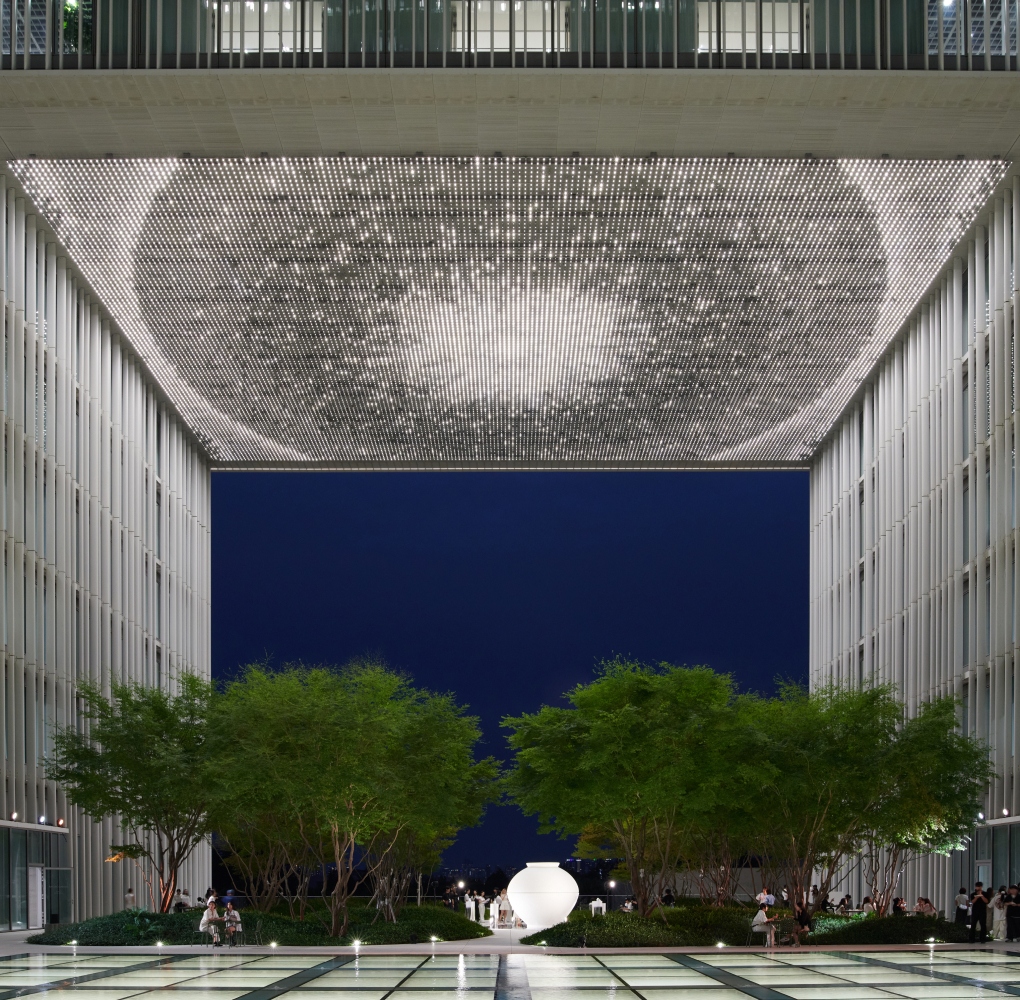
Fortuitously, I had the chance to regularly view Amorepacific's exhibitions and, even more fortunately, experience the art dining at the museum, and visit the fifth-floor garden. The event that day was labeled Art & Heritage; the profound and weighty term ‘heritage’ did not feel unnatural or awkward. That aspect is continually delightful. Another point that requires deep contemplation is the content of the heritage. The discerning taste in appreciating beauty and the attitude of willingly paying for what is deemed to have value; The Amorepacific Museum seems like a sincere result built upon that spiritual foundation.
‘Beauty Road’ encapsulates the stories of Amorepacific, which has created a beauty culture. Every month, through the columns of experts on various topics, experience the values of Amorepacific from a unique perspective.
Planning Amorepacific Communications Team
-
Like
1 -
Recommend
0 -
Thumbs up
0 -
Supporting
1 -
Want follow-up article
0



